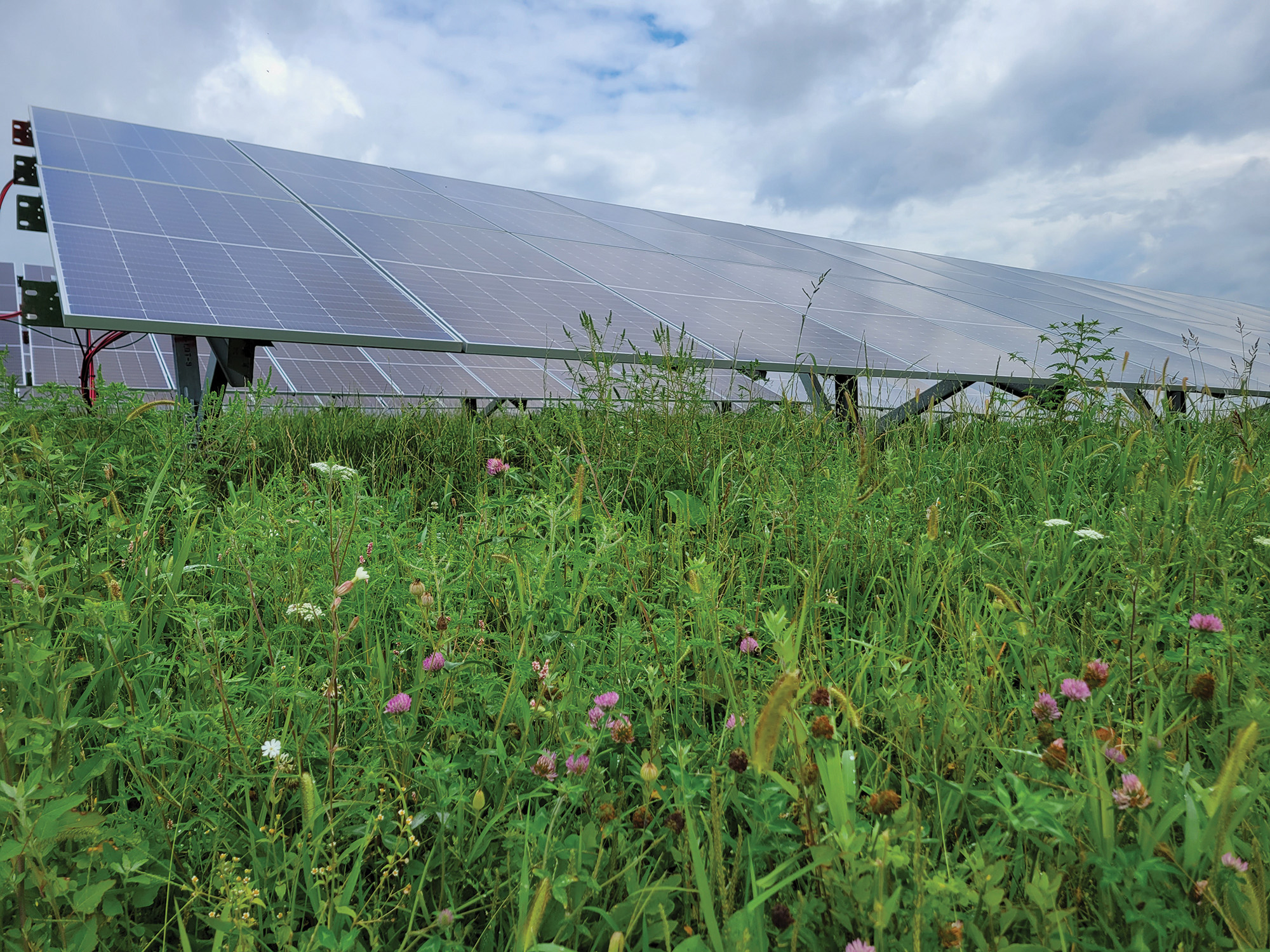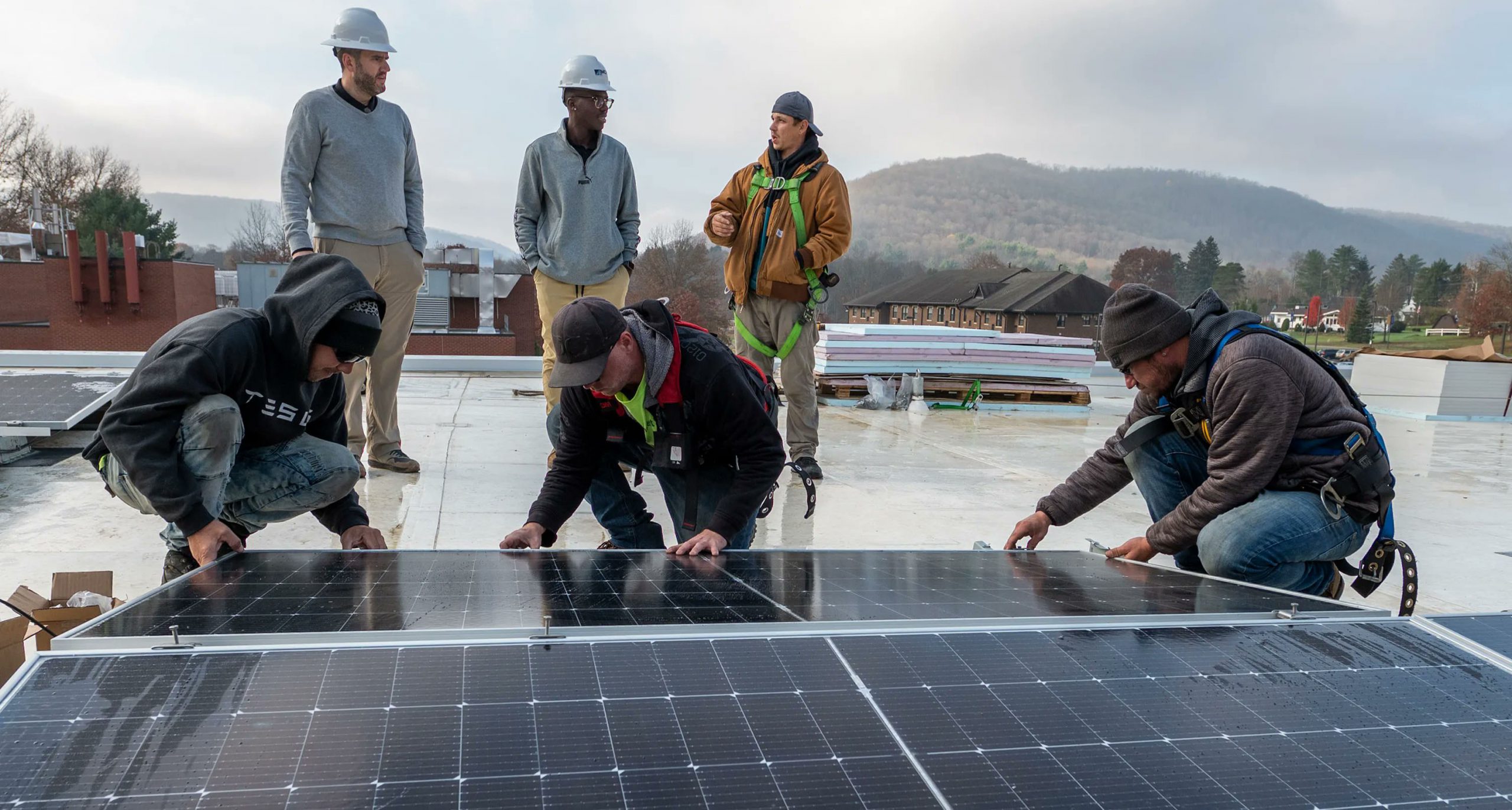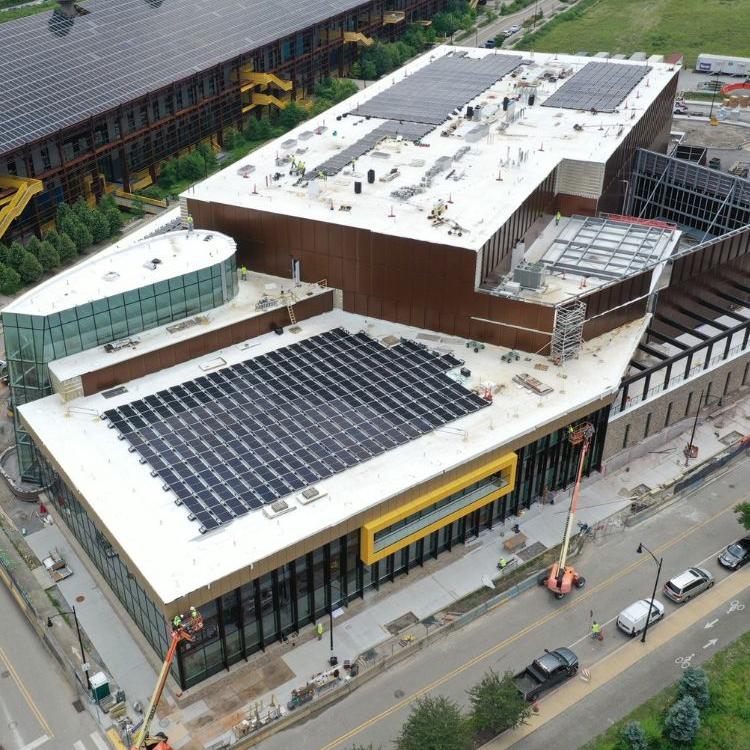Gaucho Solar (Off-site)

The University of Pittsburgh is committed to producing or procuring at least 50% renewables for its electricity by 2030 and 100% by 2037.
One mechanism for achieving our renewables goal is long-term power purchase agreements (PPAs). Pitt has one for local, renewable electricity; the University is purchasing all of the renewable electricity produced by Vesper’s 20-megawatt Gaucho Solar power facility just 25 miles from the Pittsburgh campus (on the border of Allegheny and Beaver Counties); this 68 acre project became operational in June 2023. Gaucho is currently generating ~18% of Pitt’s annual electricity.
Beyond making Pitt’s energy sourcing more sustainable, the proposed solar power facility will be able to be used as a living laboratory for student learning and research. At Pitt’s request, Vesper installed pollinator-friendly landscaping at the site, in line with Pitt’s Sustainable Landscape Design Guidelines.


